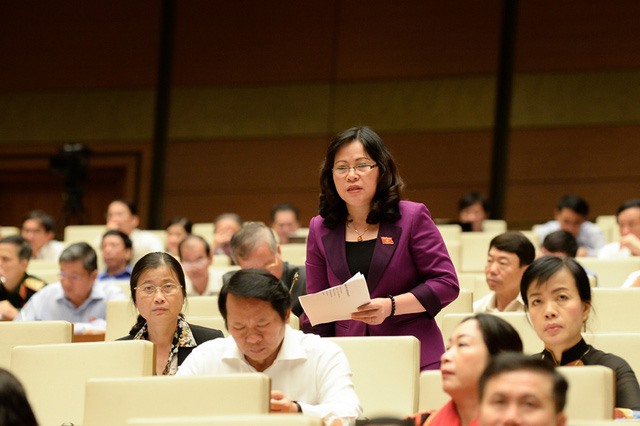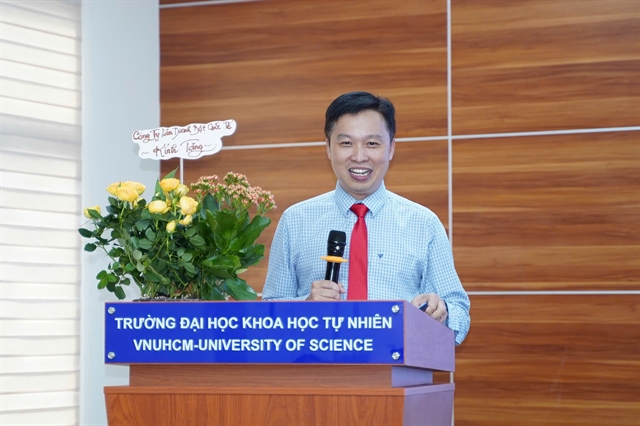 Opinion
Opinion

Ngô Thị Minh, Vice Chairwoman of the National Assembly Committee for Culture, Education, Youth and Children, speaks to Tuổi trẻ Cuối tuần (Youth Weekend Edition) on how best to utilise the State budget in general education.
 |
| Ngô Thị Minh. — Photo baoquangninh.vn |
Ngô Thị Minh, Vice Chairwoman of the National Assembly Committee for Culture, Education, Youth and Children, speaks to Tuổi trẻ Cuối tuần (Youth Weekend Edition) on how best to utilise the State budget in general education.
It is reported that 20 per cent of our annual State budget is allocated to education. Do you know how it is regulated and used?
Education has been given the top priority by the Vietnamese Party, National Assembly and the government. However, even the Ministry of Education and Training (MOET) doesn’t know how such a big sum has been used. Principally speaking, the MOET has to work closely with the Ministry of Finance and concerned ministries and agencies in the management of such a big sum of money.
But, in reality I have to admit the co-ordination between the MOET with concerned Government agencies or offices is very loose and lacks transparency. Even the MOET does not know how the money is distributed among concerned agencies and how it is used. So in my opinion, the Government should ask the MOET to report on how the money is distributed and used. For example, the MOET should know how the State budget is distributed to general schools, tertiary education and others, and is the money is used properly or not.
I should say the lion’s share of the State budget has gone to public schools. For example, at present we have about 1.3 million teachers who are now working from kindergartens to colleges/universities, but more than 90 percent of them are staff in public schools. We can’t negate that the number of students attending public schools leaves them over crowded, so even if the State keeps pouring money into public schools, I don’t think that it will help much. This is one of the important points we need to consider carefully in the near future when we revise the Law on Education to ensure the State budget will be properly and fairly distributed and used in our education system.
In reality, up to 80 per cent of the State budget proportion reserved for the education sector is used to pay teachers. Do you think the State budget is properly used?
I don’t think the State budget is properly distributed and used. If up to 80 per cent or in some localities the figure is 90 per cent, of the State budget is used to invest in the school labour force, what should we do with the remaining 20 per cent or 10 per cent budget in teaching and other activities or for investment in private schools?
This reality shows we have focused too much on public schools and their teaching staff. And most of the school children want to go to public schools rather than go to private schools. It is high time for us to create a level playing field between public and private schools.
We hope in a near future, Việt Nam will have a Law on Public-Private Partnership and both public and private schools will be treated equally before law. And the practice of ask and you shall receive will be something of the past.
At present, students’ enrolment is public schools is much bigger than that of private schools due to fees in private schools being so much higher. Do you have any comment about this?
In my opinion, the root cause of the issue is to change the approaching method. Let’s start from the 2013 Constitution on the basis of the human rights and the citizens’ rights.
Under the 2013 Constitution, after 2020 compulsory education for all children will be the 9th grade, not the 5th grade as nowadays. So what will be the State’s role then?
As I have mentioned, we need a level playing field for both public and private schools. So if the State invests some VNĐ8 million (US$350) on a student in a public school per year, the State should think how it can help private schools – not in term of money, but through Government policies, such as land policy or credit policy. These policies will surely help cut down the school fee that students attending private schools will be reduced.
As you have mentioned above, a huge sum of the State budget has been used to pay teachers. To lessen the burden on the budget, should the Government’s policy of streamlining the public staff be applied in the education sector?
I think it can be done. But as we all know, the education sector has its own characteristics that we have to analyse carefully before making the decision.
Why do I say so? There are two reasons as follows:
First, it is not yet a good time for us to start streamlining the school teaching staff. We have to consider case by case before deciding to transfer a teacher to another job or mission
Second, to pay high salaries for teachers teaching in public schools, it is necessary to transfer some 10 per cent of teachers who are now staff of public schools to work in private schools. In other words, we want to raise the number of teachers teaching in private schools to 40 per cent and only 60 per cent are in the public schools.
In my opinion, the ball now is on the Ministry of Education and Training’s court and further more it is their responsibility. — VNS




